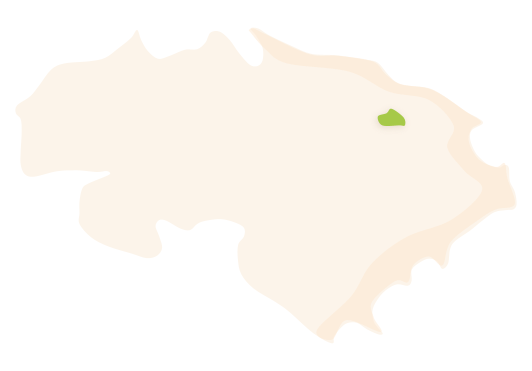La Xara, a little town incorporated as an EATIM (a special concession for small places that were not previously a municipality), is located next to the last western buttress of Montgó, with the Regalatxo ravine crossing it from north to south. It is located at an altitude of 26 metres above sea level, and has a total of 1,807 inhabitants who are called Xarers and Xareres.
 La Xara's municipal district. Surface area: xx km². Population: 1,807 (INE data 2021).
La Xara's municipal district. Surface area: xx km². Population: 1,807 (INE data 2021).HISTORY
The oldest known human settlement near the urban centre was located at the top of Benimaquia and was an oppidum (a fortified and elevated Iberian village) situated at the northwestern end of the Montgó massif and 210 metres above sea level, which was something typical of the Eastern or old Iberian period (6th century BC).
Despite this site, La Xara itself is a recent settlement, with just over 200 years of history, and it is currently a minor local entity within the municipal area of Dénia. It all began when a farmer from Senija, Mateu Ivars i Peiró, settled in this location together with his wife from Pedreguer and gave rise to the first village, which increased in size over a period of fifty years with the continuous arrival of people from other areas in the region, such as Pedreguer, Xàbia, Alcalalí or El Verger.
With reference to this family origin, in 2009 the Council of Valencian Heraldry approved the official coat of arms of La Xara, consisting of a house on which the coat of arms of the Ivars surname can be seen: two lions rampant above which a silver fleur-de-lis can be seen, which is a clear reference to the family origin of the current settlement.
This rapid development occurred due to the favourable agricultural conditions in this area, as well as a result of the employment of many people as stonemasons and builders during a historical period when the raisin trade was a flourishing industry. Thereby, it was possible to make money easily and accumulate it not only in Dénia, a “pansera” city by definition, but also in other localities within the region, where economic growth was manifested in the construction of a large number of new buildings.
Only after the general raisin crisis, focused around the year 1902, did the world of stonemasonry suffer a setback, which resulted in a migratory movement towards the United States, Argentina or Algeria. However, with the onslaught of the effects of the 1929 stock market crash, many of the people who had migrated began to return home.
The phylloxera crisis and the abandonment of grape cultivation also led to a change from rain-fed crops to irrigated ones, replacing the vines with orange trees, which at that time were more profitable and productive. Irrigation meant that there was suddenly a need to create and put into operation many wells and a vast irrigation network. This citrus crop was the main economic activity until the 70s, which is when mass tourism became the new economic motor.
FESTIVITIES
- The patronal festivities in honour of Saint Roc and Saint Mateu begin on the first weekend of September.
GASTRONOMY
- ”Llandeta” (an ancient vegetable and fish dish).
- ”Arròs a banda” (a dish of rice cooked in fish stock).
- ”Cruet de peix” (a potato and fish dish).
- ”Allioli” (a cold sauce consisting of an emulsion of garlic and olive oil).